Ethiopia's place and historyEthiopia is an independent State situated in the horn of Africa. Since 1991 Ethiopia is a landlocked country. Ethiopia shares borders with Somalia, Sudan, Kenya, The Republic of Djibouti and Eritrea. According to the 2010 revision of the UN's World Population Prospects, the total population was about 84,000,000. Ethiopia is the tenth largest by area about 1,127,127 km2 (twice of France), its capital, Addis Ababa.




Ethiopia beside Liberia was the only independent (never colonized) country in Africa, and was one of only four African members of the League of Nations. Ethiopia then became a founding member of the UN. Ethiopia is one of the founding members of the Non-Aligned Movement, G-77 and the Organization of African Unity. Addis Ababa is currently the headquarters of the African Union, the Pan African Chamber of Commerce, UNECA and the African Standby Force. 

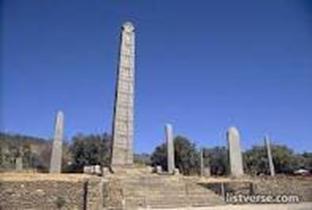 Historical sites in Ethiopia, besides the hospitality of the people, number of
impressive geological features and man-made monuments make Ethiopia a fascinating place to visit.
These striking landmarks range from waterfalls and caves, to statues and ancient monoliths that are
shrouded in mystery even to this day. Most of these monuments are in the UNESCO World Heritage list.
Historical sites in Ethiopia, besides the hospitality of the people, number of
impressive geological features and man-made monuments make Ethiopia a fascinating place to visit.
These striking landmarks range from waterfalls and caves, to statues and ancient monoliths that are
shrouded in mystery even to this day. Most of these monuments are in the UNESCO World Heritage list.Axum, the ruins of the ancient city of Aksum are located close to Ethiopia's northern border. They mark the location of the heart of ancient Ethiopia, when the Kingdom of Aksum was the most powerful state between the Eastern Roman Empire and Persia. The massive ruins, dating from between the 1st and 13th centuries, include monolithic obelisks, giant stelae, royal tombs and the ruins of ancient castles. Long after its political decline in the 10th century, Ethiopian emperors continued to be crowned in Aksum. 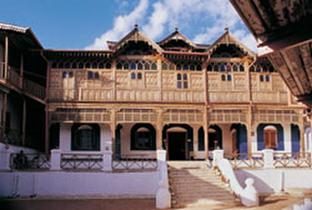 Harar Jugol, Harar is a city located in the eastern part of Ethiopia. Harar Jugol
has been included in the World Heritage List in 2006 by UNESCO in recognition of its cultural
heritage. According to UNESCO, it is "considered 'the fourth holy city' of Islam" with 82 mosques,
three of which date from the 10th century, and 102 shrines.
Harar Jugol, Harar is a city located in the eastern part of Ethiopia. Harar Jugol
has been included in the World Heritage List in 2006 by UNESCO in recognition of its cultural
heritage. According to UNESCO, it is "considered 'the fourth holy city' of Islam" with 82 mosques,
three of which date from the 10th century, and 102 shrines.Fassil Ghebbi, in the 16th and 17th centuries, the fortress-city of Fasil Ghebbi was the residence of the Ethiopian emperor Fasilides and his successors. Surrounded by a 900-m-long wall, the city contains palaces, churches, monasteries and unique public and private buildings marked by Hindu and Arab influences, subsequently transformed by the Baroque style brought to Gondar by the Jesuit missionaries. 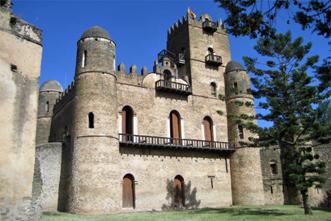 Lalibela is a town in northern Ethiopia that is famous for its monolithic rock-cut
churches. Gebre Mesqel Lalibela the king is said to have seen Jerusalem and then attempted to build a
new Jerusalem as his capital in response to the capture of old Jerusalem by Muslims in 1187.
Lalibela is a center of pilgrimage for much of the country’s orthodox people.
Lalibela is a town in northern Ethiopia that is famous for its monolithic rock-cut
churches. Gebre Mesqel Lalibela the king is said to have seen Jerusalem and then attempted to build a
new Jerusalem as his capital in response to the capture of old Jerusalem by Muslims in 1187.
Lalibela is a center of pilgrimage for much of the country’s orthodox people.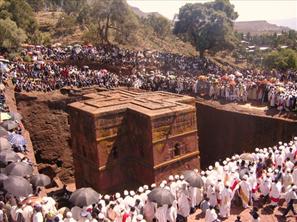 Debre Damo monastery is situated on an isolated mountain in northern part of Tigray. Debre Damo was built, in the sixth century AD, with curved wood panels, painted ceilings and walls dedicated to the legend of Saint (Abune) Aregawi. The history of Debre Damo is centered on the "Nine Saints" who came to Ethiopia from Syria to spread Christianity in the Tigray region. One of them was Saint Aregawi who settled on the mountain of Debre Damo. The other eight saints settled around Tigray countryside and all have their own church named after them. Debre Damo is only accessible by climbing up by a rope, which is made of "plaited leather", lowered from the cliffs, which visitors tie around their waist and are then pulled up by a monk at the top of the cliffs. It is only accessible to men and male animals. Women and even female animals are forbidden to set a foot into the monastery, and must remain under the cliffs and pray from there. 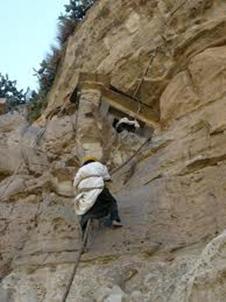
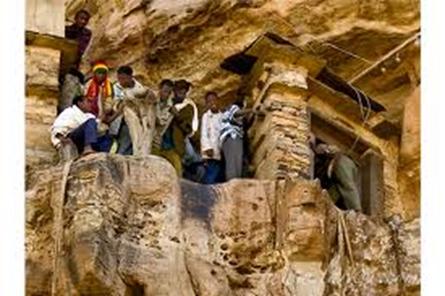
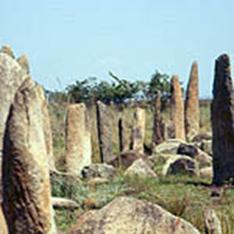
Tiya is among the most important of the roughly 160 archaeological sites discovered so far in the Soddo region, south of Addis Ababa. The site contains 36 monuments, including 32 carved stelae covered with symbols, most of which are difficult to decipher. They are the remains of an ancient Ethiopian culture whose age has not yet been precisely determined. 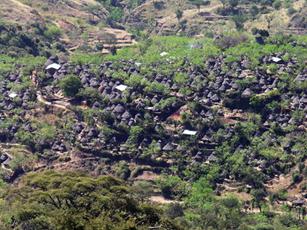
Konso is a town on the Sagan River in southwestern Ethiopia. Konso Cultural Landscape is a 55km2 arid properties of stone walled terraces and fortified settlements in the Konso highlands of Ethiopia. The Konso Cultural Landscape stretching back 21 generations (more than 400 years) is characterized by extensive dry stone terraces bearing witness to the persistent human struggle to use and harness the hard, dry and rocky environment. 
© 2011-2015 - Ethioguest |